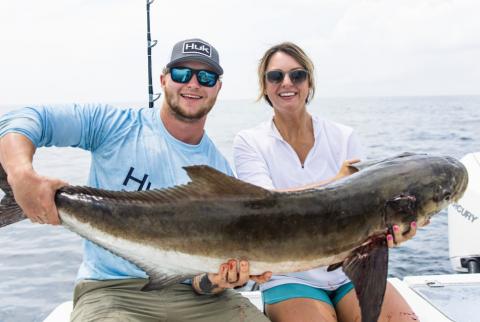Photojournal by Tes Jolly
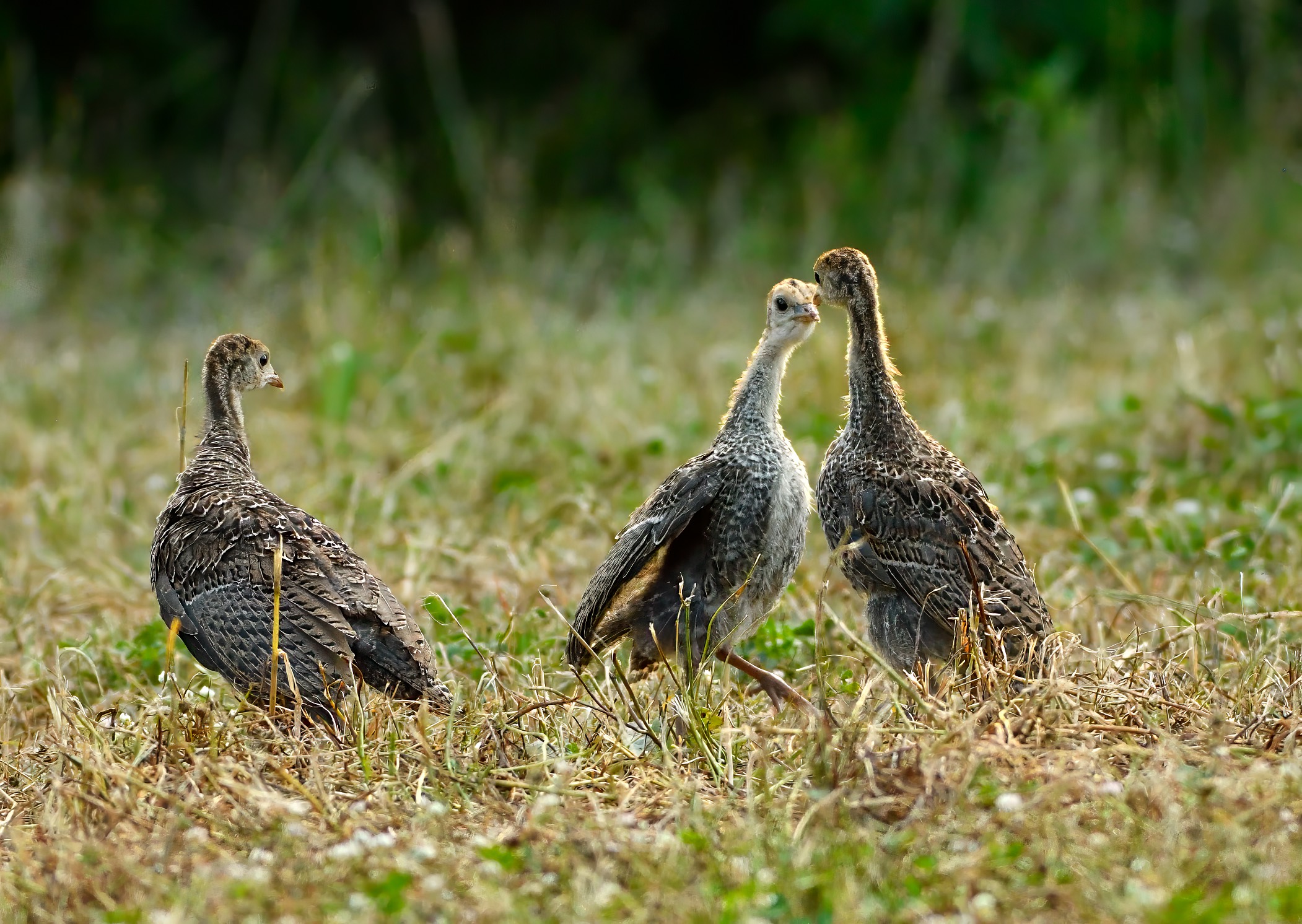
It’s late June and spring turkey season is now a collection of fond memories and humbling turkey hunting lessons. Fishing, boating, beach scenes and cookouts with family and friends help ease the wattle withdrawals we turkey chasers suffer at season’s end.
While we transition to summertime outdoor activities there’s a lot going on in the turkey woods. By June ravenous young poults are chasing down bugs in most parts of the country. The following photo gallery highlights poult development and behaviors as they age into juveniles under the brood hen’s instinctive determination and watchful eye.
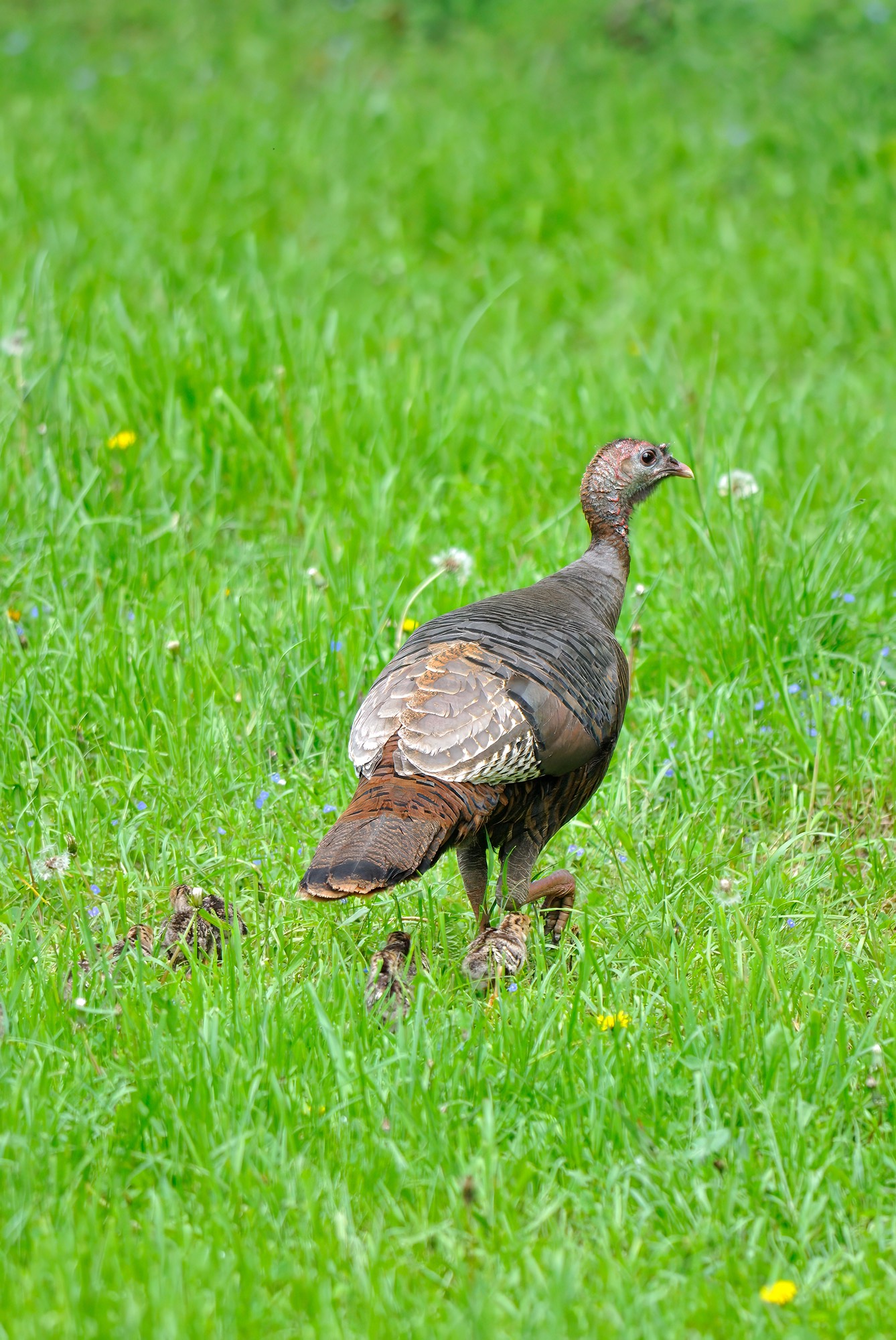
Depending on weather conditions the average 10 egg clutch takes about two days for the poults to hatch, dry off and imprint on the mother hen and their siblings. Imprinted poults learn to respond to the hen’s putt before leaving the nest and respond by freezing or running to hide beneath her. The hen clucks almost continually as she leads her poults away from the nest. The day old poults form a brood group and peck at food items as they’ve learned from the hen. By the second day out of the nest, poults are exhibiting typical movement, feeding and grooming behaviors.
In mid May the recently hatched poults pictured here were observed following the mother hen closely as she led them toward a feeding area. Weather conditions, predation, low quality habitat for protection and food resources are the primary influencers on poult mortality. Most poult deaths happen in the first 2 weeks after hatching when the young are flightless and must roost under the hen on the ground.
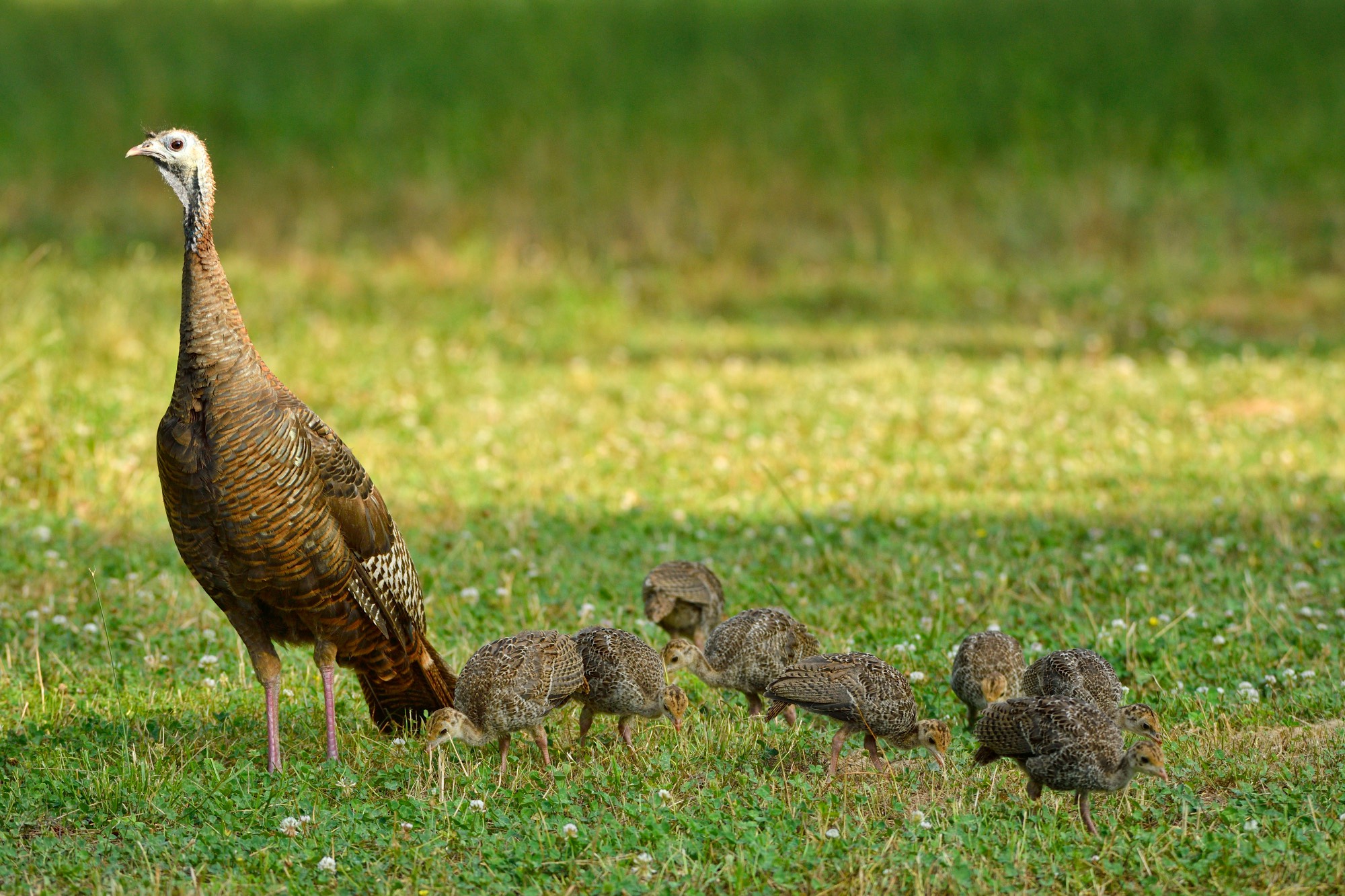
Right out of the nest poults are voracious little predators who attack their prey with gusto. To grow quickly they require protein-rich animal matter such as grasshoppers, spiders and butterflies, nabbing any bug slow enough for them to catch and small enough to swallow. Cultivated clover fields not only offer quality vegetative forage they attract a multitude of insects. This vigilant hen led her hungry brood to a clover plot to hunt bugs.
Optimum natural spring and summer brooding habitat consists of short, herbaceous grasses and forbs that support small invertebrates. Ideally, they should be taller than the poults but shorter than the hen who is always vigilant for predators.
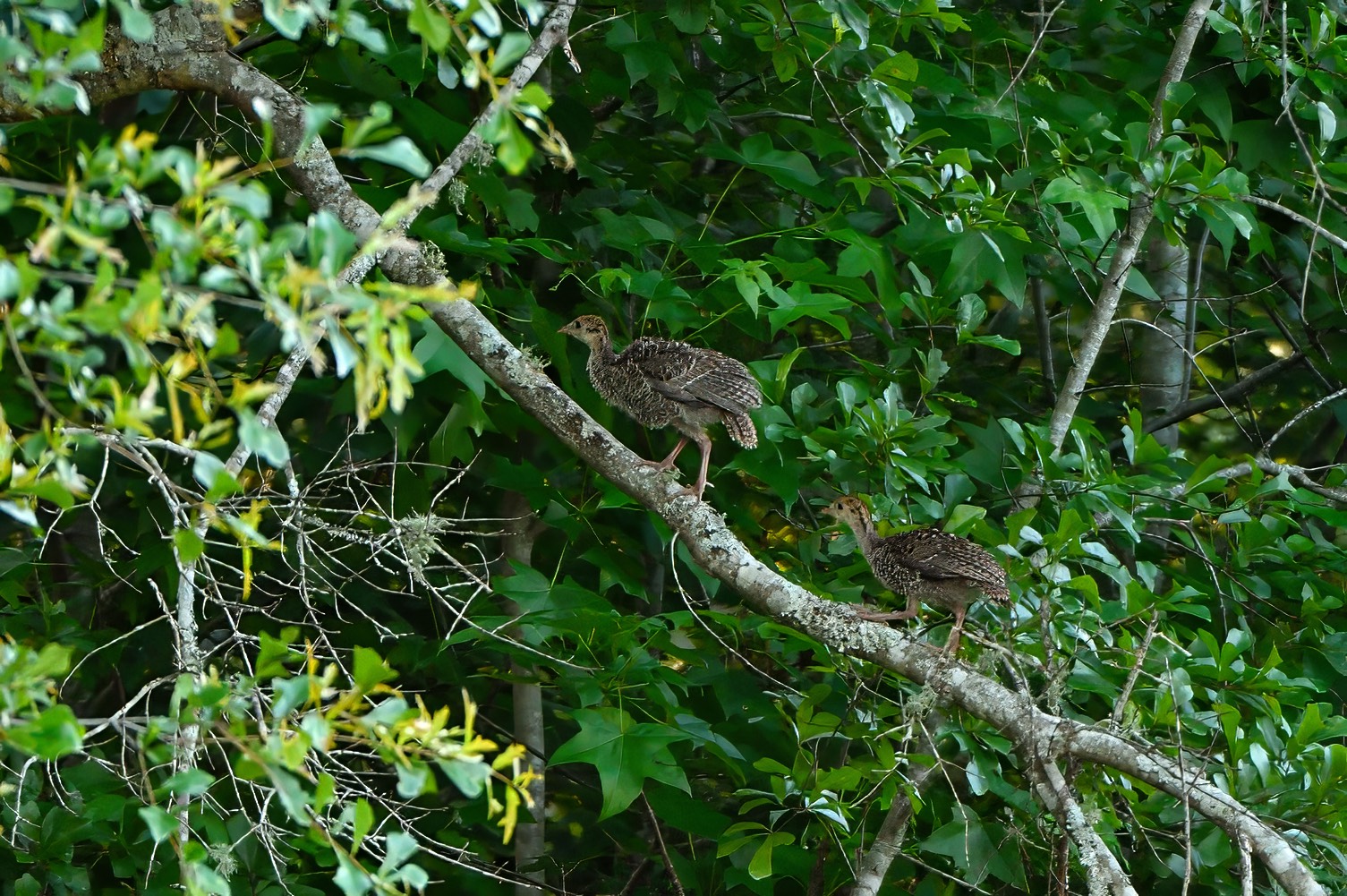
Depending on location and subspecies, a poult’s survival odds increase at about two weeks old, when it’s able to fly up to roost with the hen. By their second week poults can fly short distances. At three weeks they have the ability to roost in low trees with the hen, removing them from the danger of ground predators.
The poults pictured here and their five siblings interspersed short bursts of fluttering flight with chasing down bugs during the afternoon. At dusk the hen led her brood along the field edge to a low hanging limb. She flew up into the tree and made soft encouraging clucks. One by one the poults lifted off, landed on the limb and walked to the hen. Out of reach from ground predators prowling the night the poults’ survival chances increased dramatically.
A brood flock becomes socially organized when poults exhibit aggressive behavior and establish a pecking order within their sibling group. This occurs very early as the larger and more aggressive ones hold the highest positions. The siblings pictured here were comical to observe posturing, bluffing and face pinching. They only recently began flying up to roost yet were already displaying sibling rivalry and dominance behavior within the brood flock.
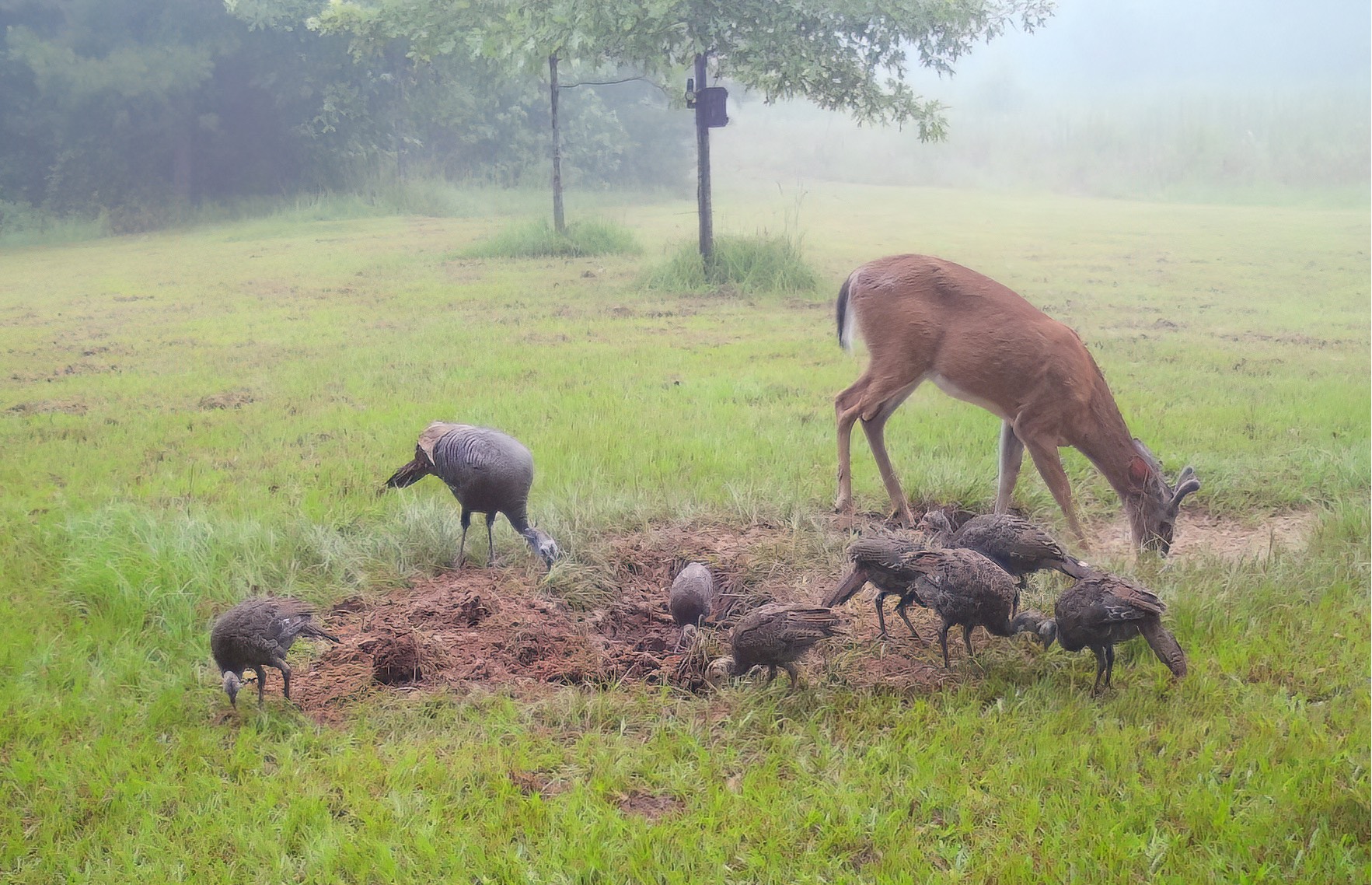
Poults begin maturing into the juvenile stage at around 6 weeks old. Juvenile plumage appears and their diet changes from predominantly insects to a higher percentage of plant matter. This includes harder matter like seeds which require grit be ingested into the gizzard to aid in digestion. Roosting ability, a change in diet and the growth of juvenile plumage coincide with a sharp decline in poult mortality.
The hen and brood pictured here visited a large, pawed out mineral lick for the exposed sandy grit at the same time a young buck was licking minerals from the soil.
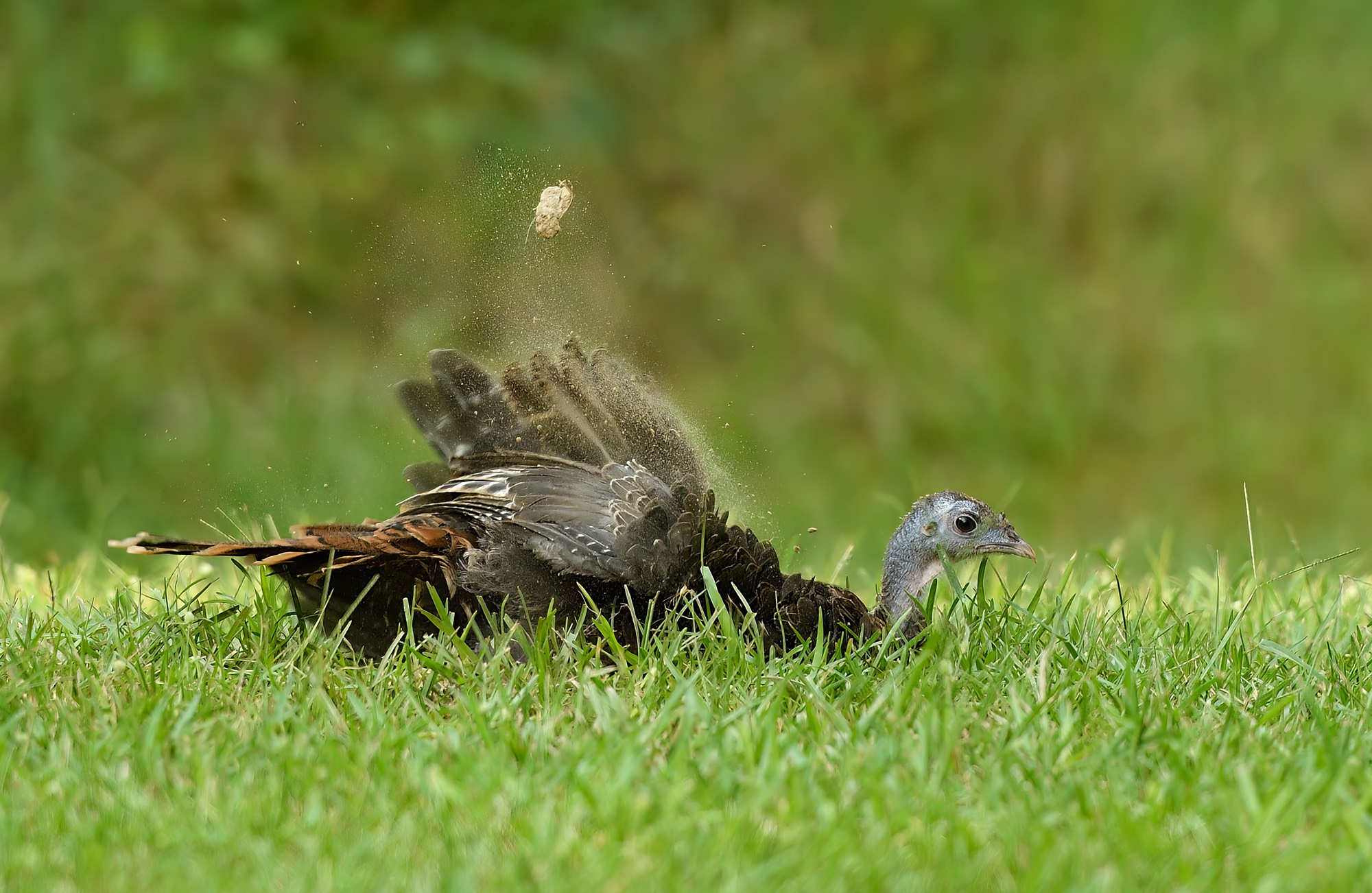
Dust bathing is a common bird behavior, especially in ground birds, like turkeys. It’s a frequent flock activity that occurs throughout the day and between periods of feeding. Turkey poults instinctively begin grooming behaviors like dusting at 2-4 days old, flopping their wings wildly, covering the body in dirt and dust.
The juvenile turkey pictured here settled onto an inactive ant mound for an enthusiastic dirt-flying session. Dusting coats its feathers and skin, helping dislodge feather parasites and body lice.That large clump is a tossed up gobbler dropping the camera caught in midair.
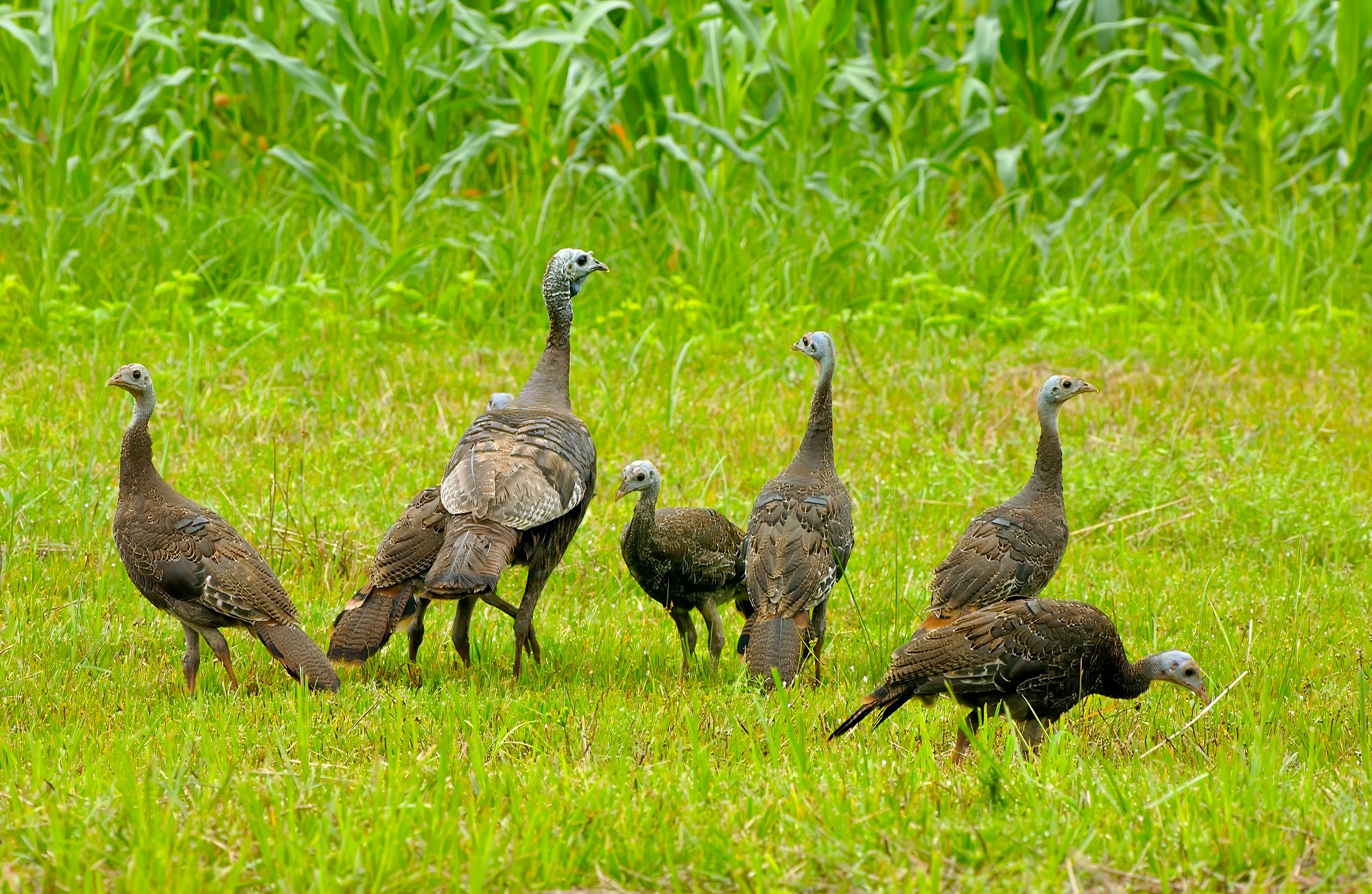
As summer wears on brood flocks living in optimal habitat have an advantage. Juveniles like the ones pictured are nearly adult size and the hen remains watchful. This brood flock has endured a daunting survival gauntlet and succeeded to this point. Wild turkeys are a remarkable resource and not just in gobblers for hunting. Hens bear the sole burden to successfully produce poults to adulthood year in and year out. What a formidable task that’s due our respect.
Successful poult production relies on our thoughtful consideration and committed efforts to provide hens with the best opportunity to succeed. A solid timber, habitat, predator control and water and forage resources management plan with a special focus on spring/summer nesting and brooding requirements is a good start.














